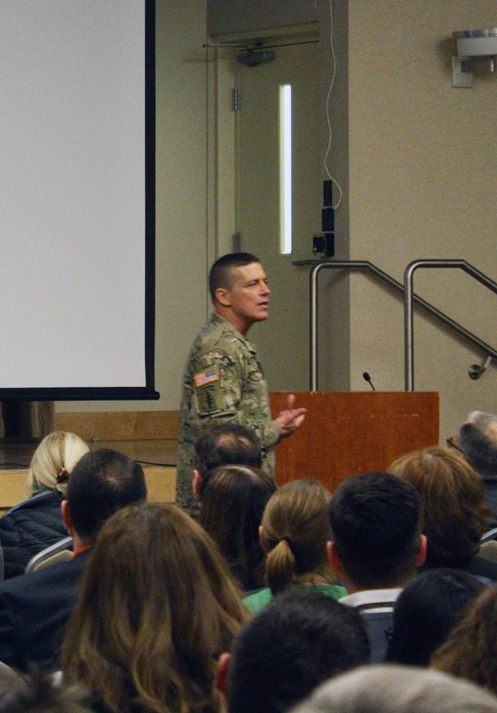
WASHINGTON — Lt. Gen. Paul Ostrowski, the Principal Military Deputy to Assistant Secretary of the Army (Acquisition, Logistics and Technology) (ASA (ALT)), met with members of the ASA(ALT) staff at the Pentagon Jan. 22 to discuss initiatives to streamline the acquisition process and change the culture in order to improve efforts to deliver timely capability to the Soldier.
The so-called “Road Show” has taken Ostrowski to Army Program Executive Offices (PEOs) nationwide, to inform the 39,000 member workforce about how the acquisition process is changing and why these changes are being made.
“The National Defense Authorization Act (NDAA) for Fiscal Year 2017 (FY17) and the NDAA FY16, what did they tell us? “They said that acquisition within the services is broken,” he continued. “I need everybody on board [to fix this system]. The only way this is going to succeed is if it’s driven by the bottom up,” urged Ostrowski.
As he addressed the audience, four main themes became apparent. The first order of business is to empower the acquisition workforce to do their jobs without unnecessary interference. The goal is to give the people involved with the daily work the responsibility they need to do their jobs. This allows them to make the calls they feel are best and most appropriate for each given situation.
“Let’s empower the folks who are doing the actual work to make the decisions,” he said.
The next order of business is to encourage acquisition individuals and teams to not only take more risk, but also to manage risk appropriately. According to Ostrowski, this will enable the workforce to increase flexibility and explore options for rapid prototyping and rapid fielding.
“In terms of rapid prototyping, that’s what Congress is pushing us to go do,” he said. “We just need to be smart enough in our discussions with the Program/Product/Project Managers (PMs) and PEOs. Let’s get after doing some prototyping, bring down risk so that when we do get to a Milestone B, we know we’re ready to go,” he continued.
In another order of business, Ostrowski highlighted the need to change the culture within the acquisition community.
“This is about doing things smarter,” he said. “This is about getting things done. This is about getting out of the process mindset and getting on with the capability (and) delivery mindset. It’s changing the culture,” he continued. “We can’t keep up with the threat doing things the way we do it now. We can’t keep up with technology doing things the way we do it now. So, we can either become the dinosaur or we can change. I vote for the latter.”
Ostrowski’s final order of business is for members of the acquisition community to continually challenge the status quo. Change is needed, and the process won’t occur without people taking a good look at the areas in which they operate and asking themselves if the most efficient method of doing business is currently being used.
For the Army to excel at modernization and sustainment, the current process must change. The first steps in this process have already been taken, as the realization for change has occurred. Now begins the work of actually implementing those changes into day-to-day operations. The Army acquisition community will continue to provide Soldiers with the weapon systems and equipment they need to maintain superiority over their adversaries. These changes within the system will further empower the acquisition team to be much more effective in their jobs.
“Everyone is sick of the current system,” Ostrowski said. “It can’t keep up with the threat and it can’t keep up with the advances in technology.” “So, we have to fix this and the Chief (Chief of Staff of the Army, General Mark Milley) is leading the way. It’s up to us and all our PEOs out there to change the culture and streamline the process. That’s exactly what we’re going to do,” he concluded.
Subscribe to Army AL&T News, the premier online news source for the Acquisition, Logistics, and Technology (AL&T) Workforce.


